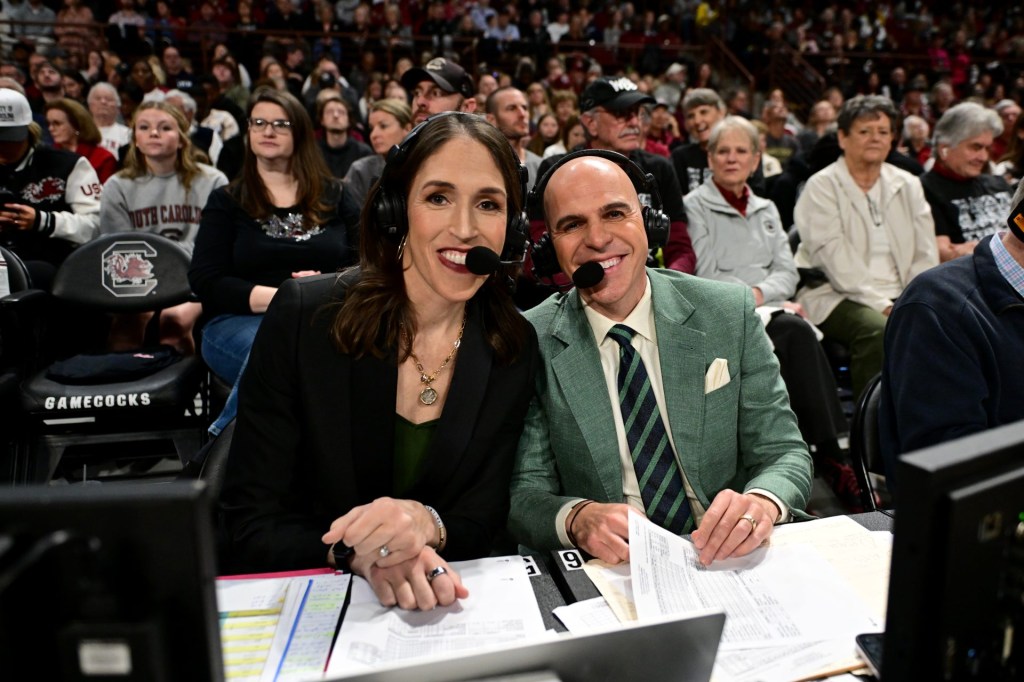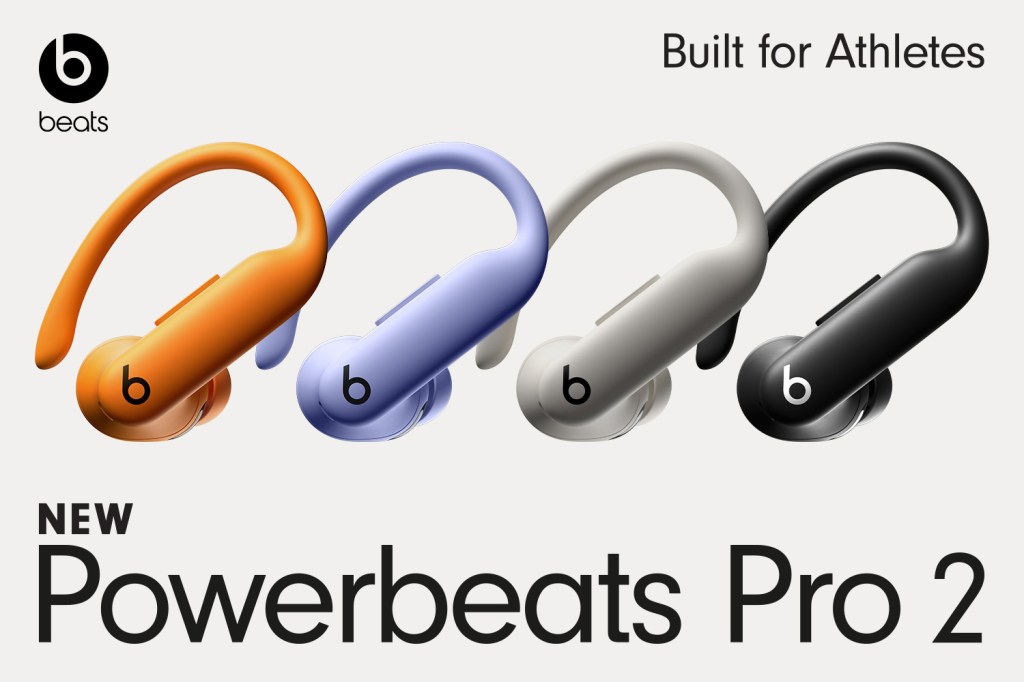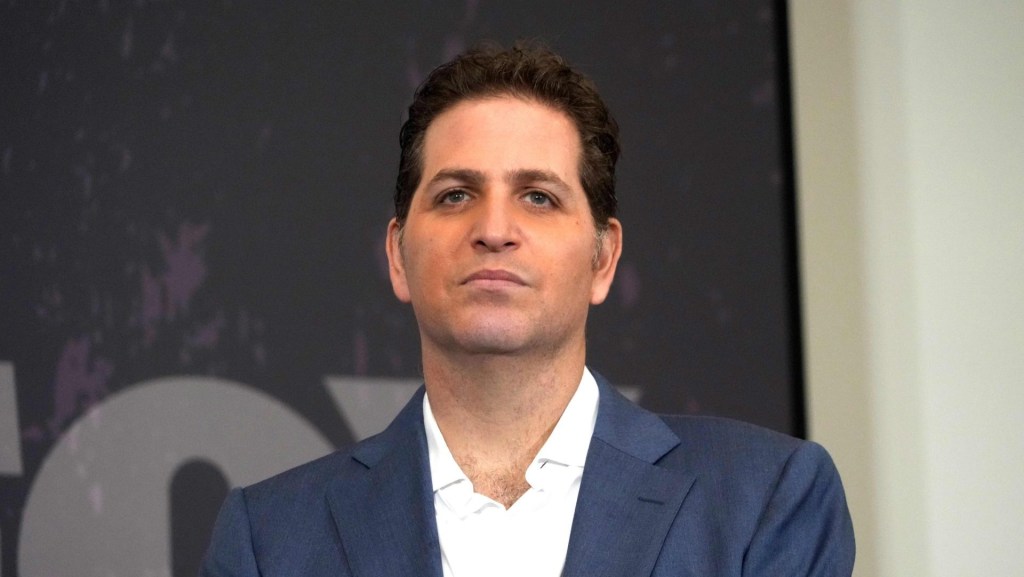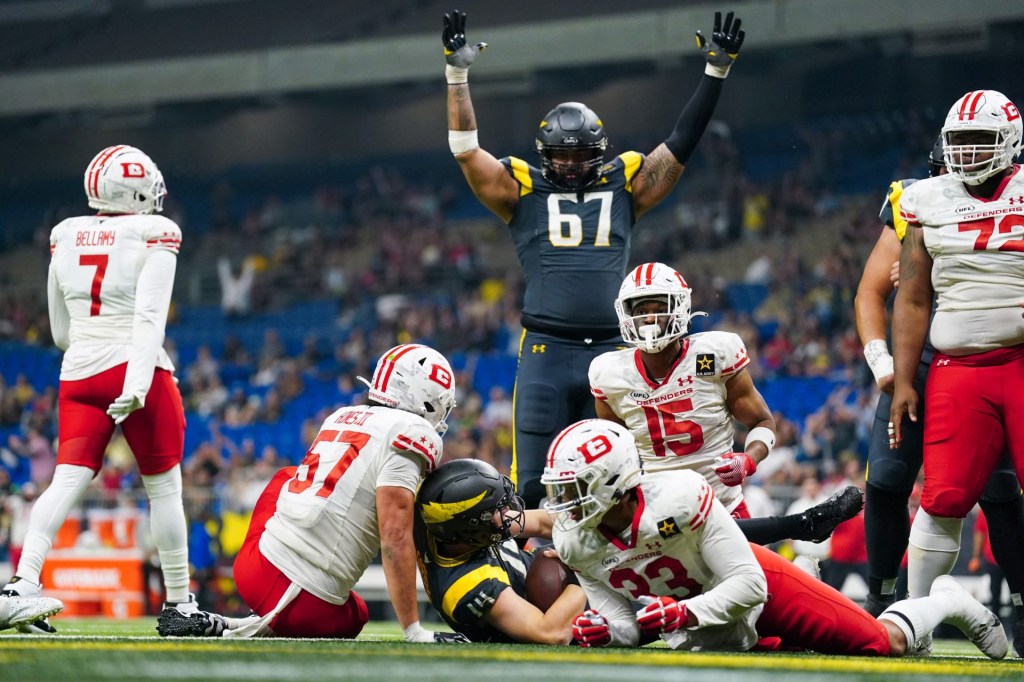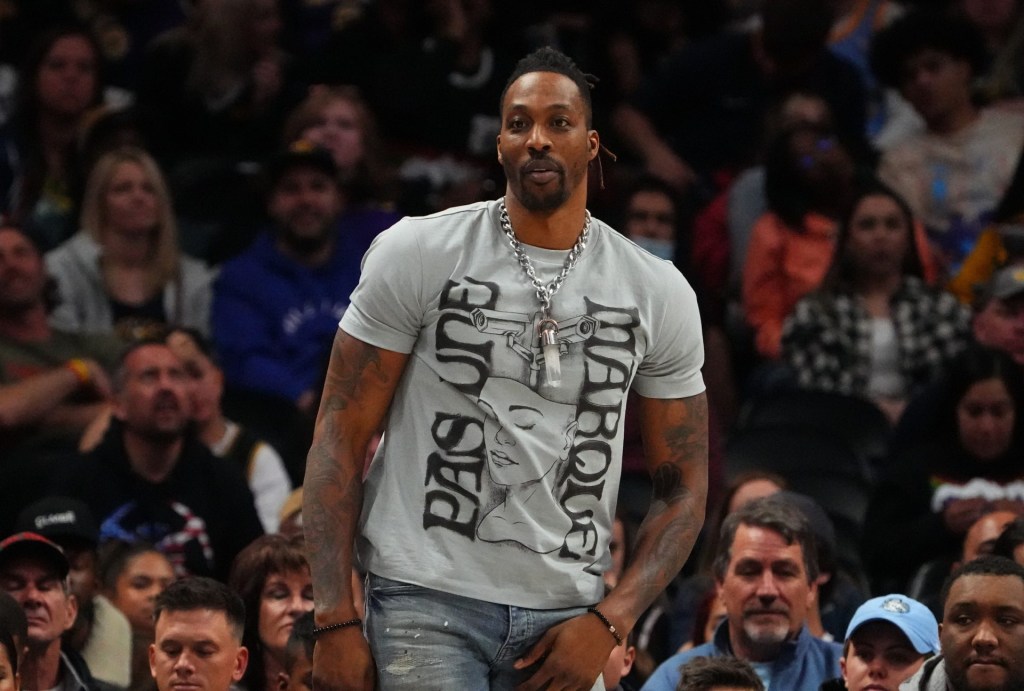Ryan Ruocco, now ESPN’s top voice of women’s basketball for both college and the WNBA, admits he was reluctant when he was first presented with the opportunity in 2013.
At the time, Ruocco was a host at ESPN Radio in New York alongside Stephen A. Smith and backing up Ian Eagle calling Nets games on YES Network. Smith had been pushing for Ruocco to get play-by-play reps at ESPN, and eventually former network executives Laurie Orlando and Tim McCarthy inquired about Ruocco’s interest in calling WNBA games.
“At that time, I was really trying to get into calling the NBA for ESPN,” Ruocco tells Front Office Sports. “I didn’t know how amazing the experience was going to be calling the WNBA. They actually had to convince me somewhat that this was going to be an awesome assignment.”
It was emphasized to Ruocco how much he’d love working alongside color commentator Rebecca Lobo, and ultimately agreed to call the WNBA. A small package of national NBA games was thrown into his deal as a sweetener.
This anecdote is an allegory of how far the WNBA has come in the past decade-plus. Not only was Ruocco immediately vaulted into the top spot in his mid-20s, calling the league’s Finals that same year despite having had no experience in women’s hoops—he had to be convinced that it was in his best interest to take it.
“What’s funny about it is I didn’t know what a gem of a project it was. I didn’t know I was going to fall in love with the WNBA the way that I did—but it happened instantly,” Ruocco continues. “It took maybe a game or two before I was like, ‘Oh my gosh, this league is awesome. Rebecca is awesome.’ I just loved the collegiate feel of everyone involved with the league. And it took off from there.”
There’s an adage in baseball, where you want a team that hangs out together—not one that takes 25 separate cabs after the games. The same axiom also applies to broadcast crews.
“The first game we did, we hit it off immediately,” says Lobo, one of the greatest women’s basketball players of all time. “We have this great chemistry, and the three of us are great friends. The chemistry was pretty much from the beginning.”
She recalled the trio spent a “ton of time together” out on the road in their early years calling the WNBA as a team, given that much of the production crew was working remotely from ESPN headquarters in Bristol, Conn.
“You’re spending all your time together,” Lobo tells FOS. “We’d go to meals together, we’d hang out together, we’d go for walks together. We just built up this genuine friendship that we all have to this day. Chemistry is just one of those things. You can work on it and make it better, but sometimes it’s instant.”
Hilary Guy, ESPN’s VP of production for the WNBA and NBA studio, credits Ruocco as being “such a great teammate” not just to his boothmates but also to everyone else behind the scenes. She praises him for his “court vision,” a largely unteachable quality in which elite broadcasters anticipate where a play is going before the ball gets there and have immaculate timing on their calls.
“He connects with the viewer, with his catchphrases like, ‘You bet!’” she adds.
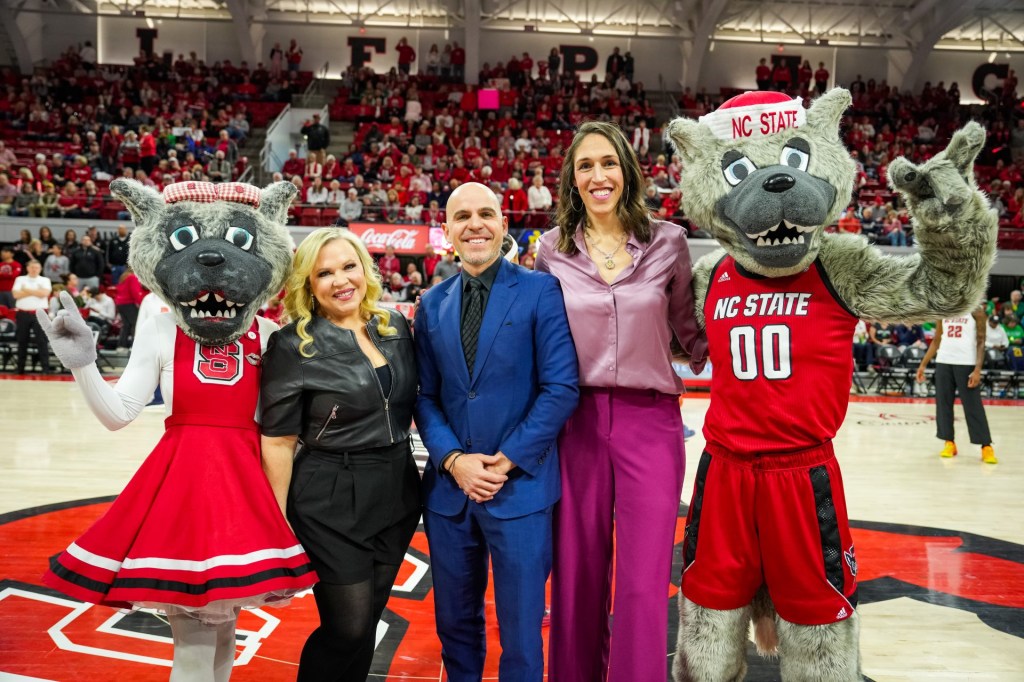
Ruocco added the top women’s college basketball announcing spot to his portfolio before the 2021 season, after Adam Amin left ESPN for Fox Sports. Former ESPN executive Mike Shiffman approached Ruocco and asked him whether he’d be interested in the role.
“I quickly consulted with my agent, Matt Kramer [of CAA], and I was like, ‘I feel like I should do it. This is a big event that really feels like it’s only getting bigger,’” Ruocco says. “Rebecca and [sideline reporter] Holly [Rowe] had emphasized to me, ‘These games are so fun. You are going to love this.’”
The first NCAA tournament they did together was in a bubble in San Antonio, with limited attendance due to the COVID-19 pandemic. But Ruocco still remembers thinking it was the “coolest event I’ve ever done.”
“Wait till you do it with real fans, and the way it is walking around the city when it’s actually a Final Four with no restrictions,” Ruocco remembers Lobo and Rowe telling him at the time.
One of the games featured Caitlin Clark’s Iowa team versus Paige Bueckers and UConn in the Sweet 16 when the two phenom point guards were freshmen, and in the several years since the attention around women’s basketball has ratcheted up.
“I just got very quickly addicted to how thrilling the experience is,” Ruocco says. “You feel the stakes and the drama.”
While the NBA, NFL, MLB, and NHL pro and college seasons run concurrently, women’s basketball is different in that college and the WNBA run into each other’s offseasons. The WNBA draft is less than two weeks after the Final Four.
That puts Ruocco, Lobo, and Rowe in a distinctive booth in sports, as they’re together for a bulk of the year.
“These are the voices that you’re going to hear when you turn on women’s basketball for a big game on an ESPN platform,” ESPN SVP of production Meg Aronowitz says. “That resonates with the viewer. As the student-athletes transition from the college game into the WNBA, it’s a seamless progression throughout the year of being able to tell those stories and giving the viewer—it’s like comfort food, because you tune in and you know what you’re going to get.”


